Kenn Taylor contemplates two vast cemeteries; one in Liverpool, one in Bradford. All photographs by Kenn Taylor and Chris Gibson.
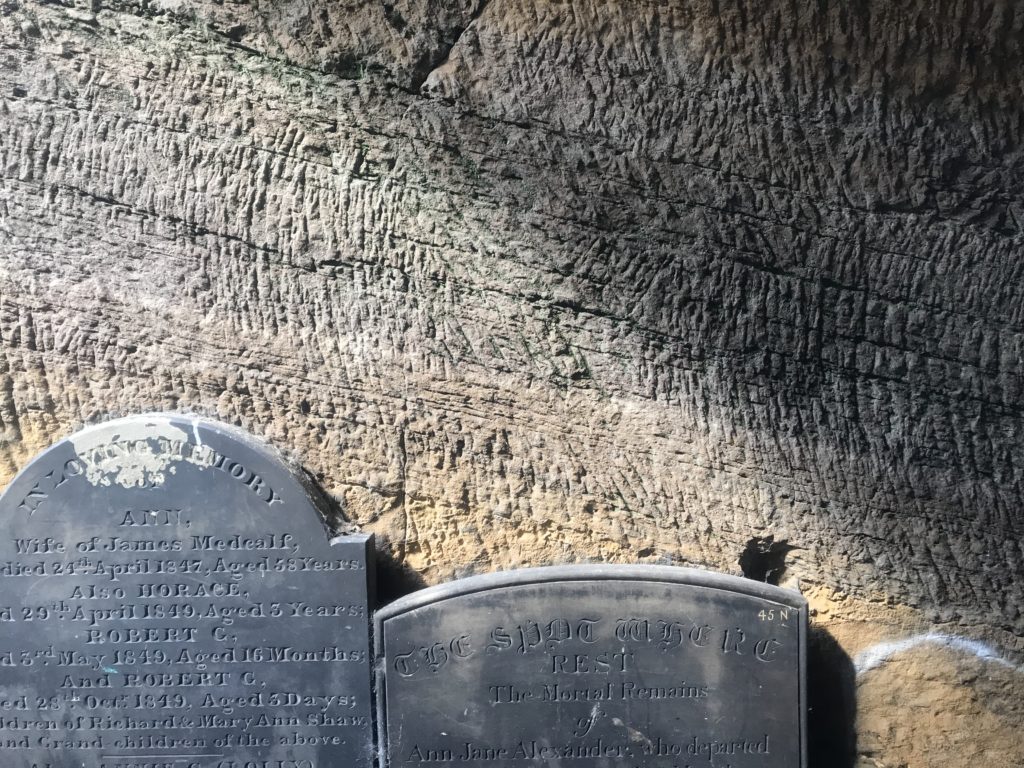
Two old cemeteries in two Northern English cities are as striking as they are little-known outside of their own regions. They are marked by their dramatic and very contrasting settings, one up high, one down below.
Liverpool’s St James’ Cemetery is the antithesis to the adjacent soaring Anglican Cathedral, which is one of the world’s largest. My infant grandmother was taken to the laying of its foundation stone by King Edward VII in 1904. A few weeks prior to this ceremony though, Fred Bower, a stonemason, poet and socialist, buried a tin time capsule under where the foundation stone would be placed. It contained the message “within a stone’s throw from here, human beings are housed in slums not fit for swine”. Accompanied by copies of the Clarion and Labour Leader, it was signed “Yours sincerely, ‘A Wage Slave’.” Bower only revealed this secret 32 years later in his autobiography, Rolling Stonemason.
On top of this foundation stone, at the crest of St James Mount, was built Giles Gilbert Scott’s vast edifice of a cathedral. It’s remarkably similar in profile to his Bankside Power Station, now Tate Modern. You have to admire a designer who sees the same basic shape works for both the House of God and the House of Electricity. However, the cathedral was built beside a precipice. The void below was originally a quarry for several hundred years. Its stone used for Liverpool’s first dock and Town Hall. With the city growing rapidly, the stone running out and demand for burial space increasing, the quarry was ideal for conversion. In 1826, architect John Foster Junior was commissioned to design a cemetery in the space along the same lines as Père Lachaise in Paris. Grand ramps to convey coffins down from street level were constructed. As was a mortuary chapel in the style of a Greek Temple, the Oratory. This still stands today as an occasionally opened museum of funerary sculpture. The area around the cemetery when it opened was packed with Georgian terraces, home to the city’s colonialist merchant class. Later it became one of Liverpool’s main multicultural and bohemian areas, home to John Lennon, Roger McGough and David Olusoga at various times, amongst many others.
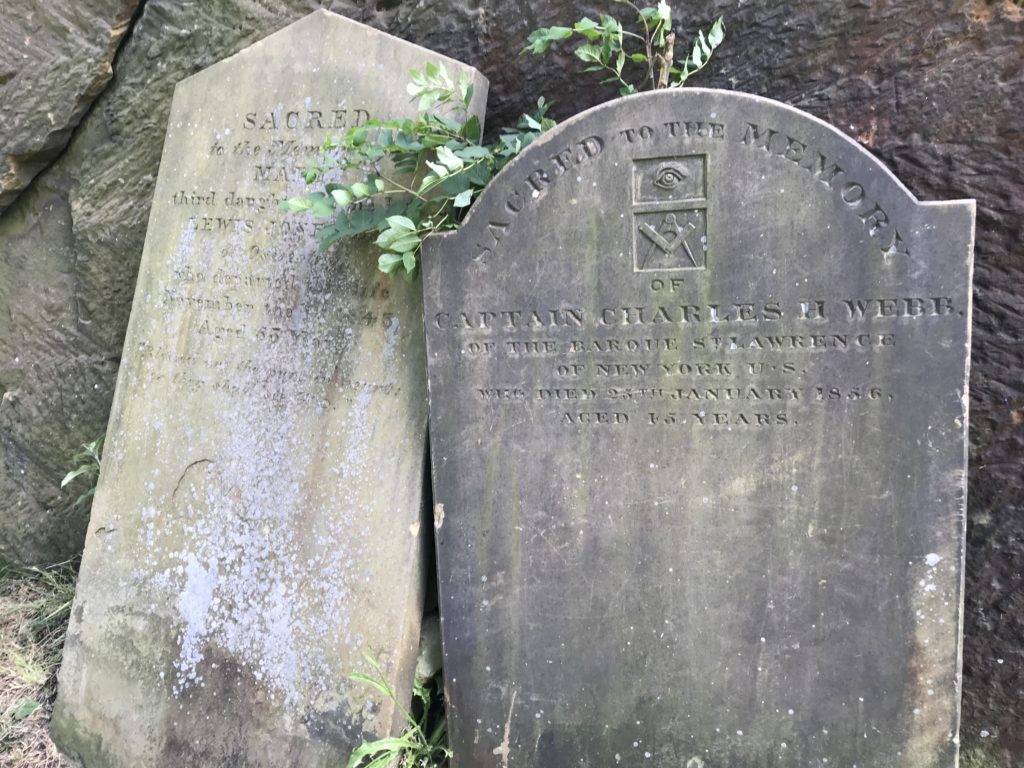
The cemetery was well used over the following decades. As its space began to become exhausted though, this coincided with the search for a site for a cathedral. The cemetery’s use continued after cathedral construction started. However, by the 1930s, it was packed with gravestones and the population increasingly sought newer, plainer cemeteries out the suburbs, as the move away from the Victorian taste for death began. The cathedral had no interest in taking on the graveyard and St James’ closed in 1936 after 57,774 burials. Like many similar cemeteries around the UK, it began to fall into disrepair after WWII. By the 1960s it was in a real state of decay, frequently used by sex workers and their clients as it was close to Liverpool’s then red light district, before the area above was gentrified. In the 1970s the City Council came and cleared the majority of the gravestones. Many were stacked and covered in earth, creating an artificial slope. Others were made to tightly line the sides of the cemetery and even the interior of the snaking tunnel and walkway that takes you down into it. Other memorials still were grouped together in odd arrangements, presumably by Council workmen at a whim. Only a handful of the graves remained untouched. This however created much more green open space that was once dense with memorials. In 2001 the Archbishop’s Council and the Conservation Foundation set up The Friends of St James’ Garden to lead the preservation and the reclamation of the site.
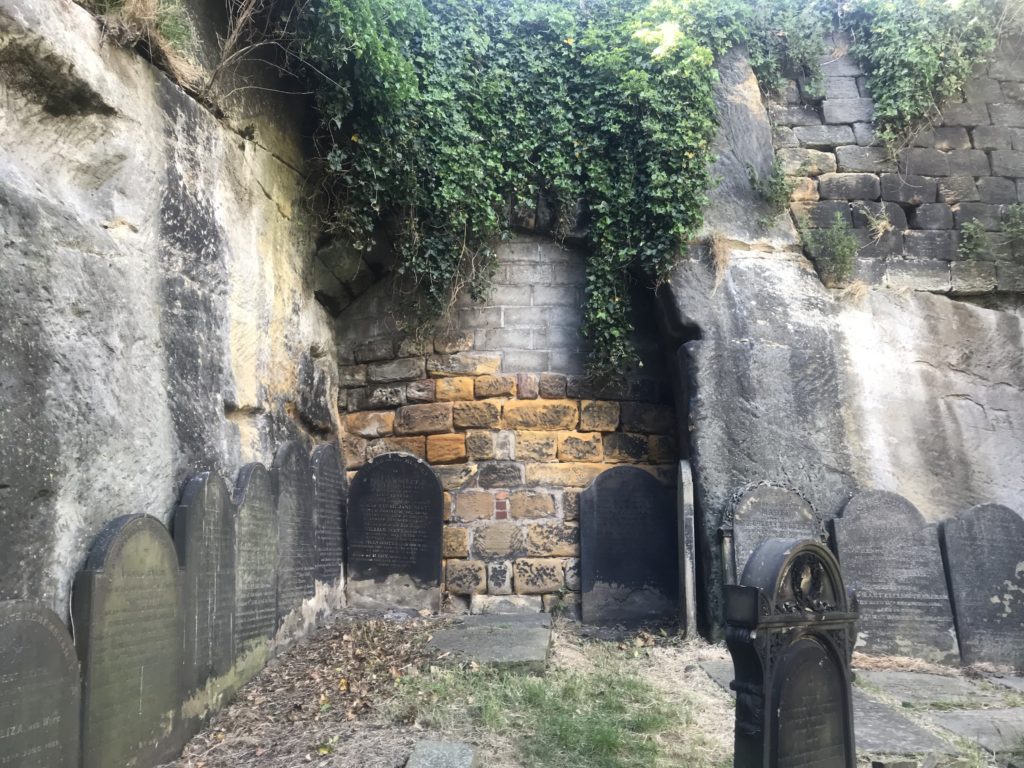
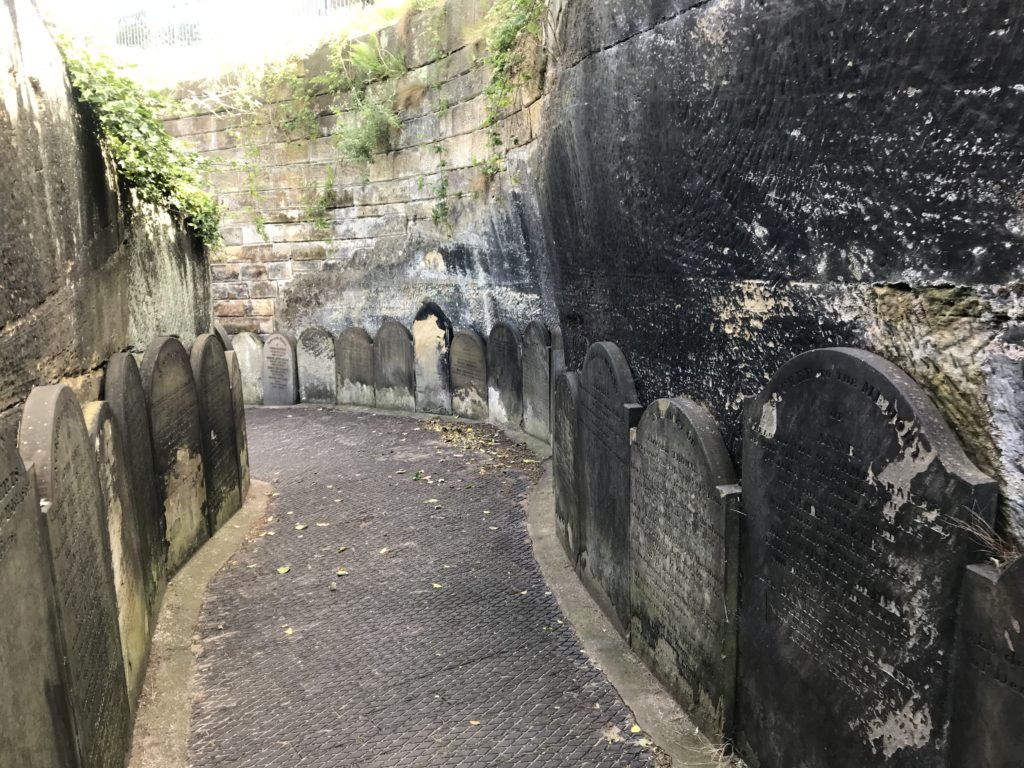
Descending down the winding ramp of St James’, carved through the bedrock itself, could not be more gothic if you tried. It would seem like a B-movie film set if it were not so genuinely marked by the passage of time. The tunnel is cut through multi-coloured, multi-grained stone scarred by tools, strange, runic masons’ marks and carved graffiti with dates in the 1700s. Lined at ground level with those tightly-packed gravestones, To The Memory. In Memory Of. In Affectionate Memory. Now all those with memories of the dead are long gone too. It’s like going through the gullet of a HP Lovecraft story — thankfully though, a short one, as the tunnel opens out and light gets to you again, filtered through the many trees. It seems all the brighter illuminating the sides of old quarry that surround you, the dark grey-green walls shored up with yellow stone and brick. Many of the memorials themselves are so worn and unstable they have begun to be absorbed back into the landscape. Only those made of marble remain clear and bright, albeit cracked and stained. Down here there’s a feeling of being very far away from the world, even though it’s just on the edge of the city centre.
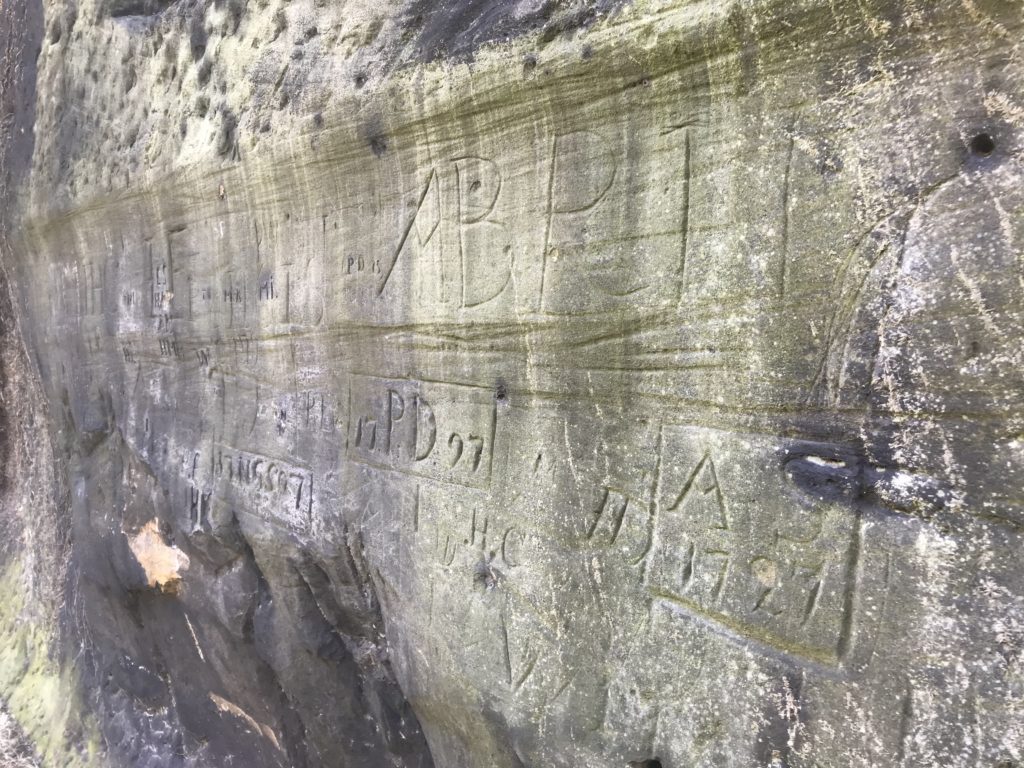
The dramatic ramps constructed for the horse-drawn hearses, with catacombs underneath, crumbling in places and with vines hanging over them, now look like the ancient ruins they were inspired by. Various ominous bricked up and barred tunnels lead off from different corners of the site. On the memorials, anchors, intense Masonic eyes, coats of arms and moons. Beyond the symbols, stories too. A few famous people. Edward Rushton, the blind anti-slavery campaigner; Kitty Wilkinson, the public wash house pioneer; William Huskisson MP, who helped make the world’s first inter-city railway happen. He would also end up being the first person to be killed by a train at its opening. His domed monument is by far the largest in the cemetery. The graves of all those old sea captains, but also children. Too many children. Several gravestones hold a long list of those who died in the Liverpool Orphan Boys Asylum. Aged 12, Aged 9, Aged 9, Aged 14, Aged 10, Aged 9, Aged 8, on and on. No poems or Bible quotes or symbols for them, just name, age, date of death. We may be equal in death but not in memoriam.
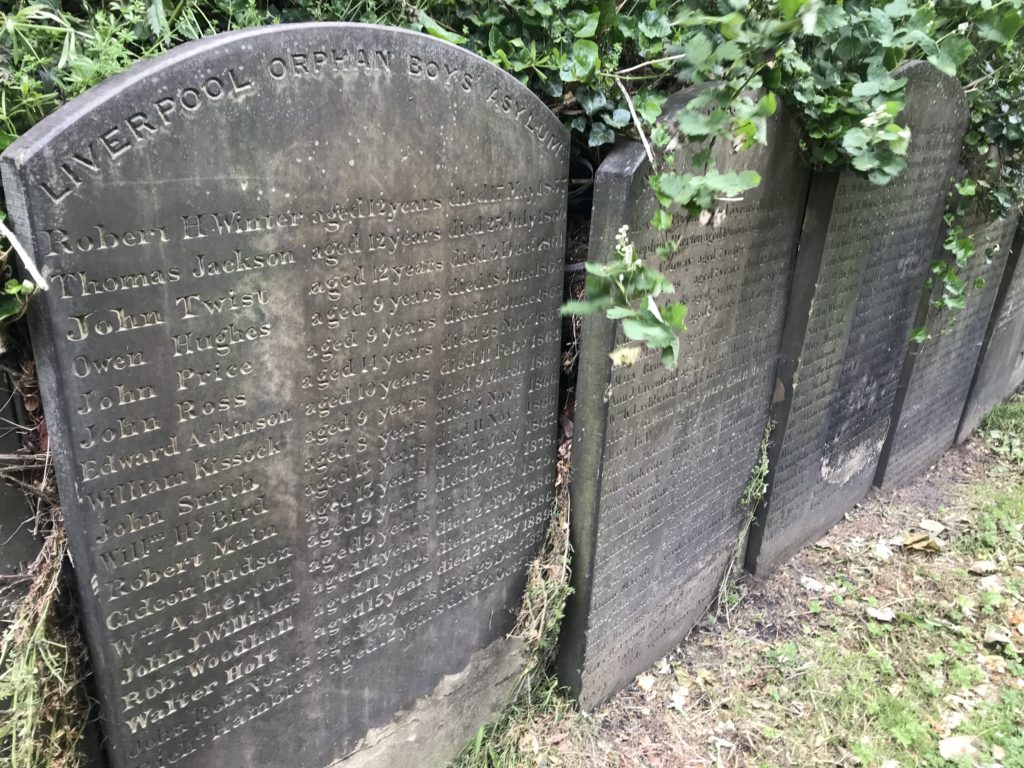
From a wall in the centre pours one of the few natural springs in Liverpool, with many different coloured bands of sedimental rock above it. When there are few people around, it is one of the few sounds down here and adds to the lost world feeling.
At the centre of St James’, the cathedral looms above, appearing even larger and overwhelming now you’re literally underground below it. In the evening, those sunsets which drape themselves over Liverpool flow down even into here, and the dark sandstone of the cathedral goes a deeper shade of red until the sun eventually dips behind it. Getting in and out of St James’ requires descent and ascent through that hand-carved tunnel at the city end, or through a solid stone arch atop a wooded hill at the Liverpool 8 end. Emerging out upwards to higher ground, but often no better light than can be found in this sunken place.
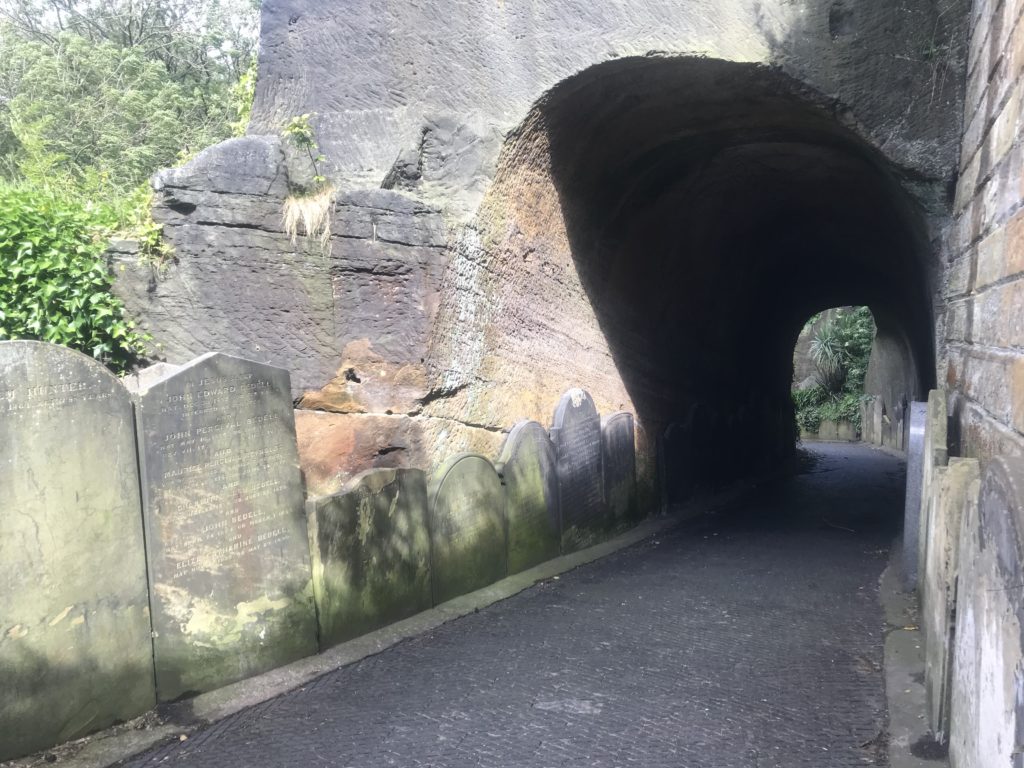
Higher still is another graveyard, way over the Pennines. Undercliffe Cemetery stands above Bradford with striking views across the city and the surrounding hills and valleys. Prominent in the distance is the vast edifice of Lister/Manningham Mills. Once the world’s largest silk factory, a strike there was a key event in the founding of the Independent Labour Party. Now, it is half converted to luxury flats and half empty. If that isn’t a symbol of much that has gone wrong in this country I don’t know what is. The well-known local photographer Ian Beesley has said you could once count 100 mill chimneys from Undercliffe. There are a lot less these days, but even now still plenty in the eyeline. Undercliffe’s origins are similar to St James’: built to meet the demands of another rapidly growing industrial city. A group of businessmen formed a joint stock company to deal with the increasing demand for burials. They purchased one hundred acres of the Undercliffe Estate in 1851 and the site was landscaped and planted, including a great promenade right through its centre with a terrace at the western end. It was consecrated in 1854 and even early on, with its fine views, the burial ground was popular as a park too.
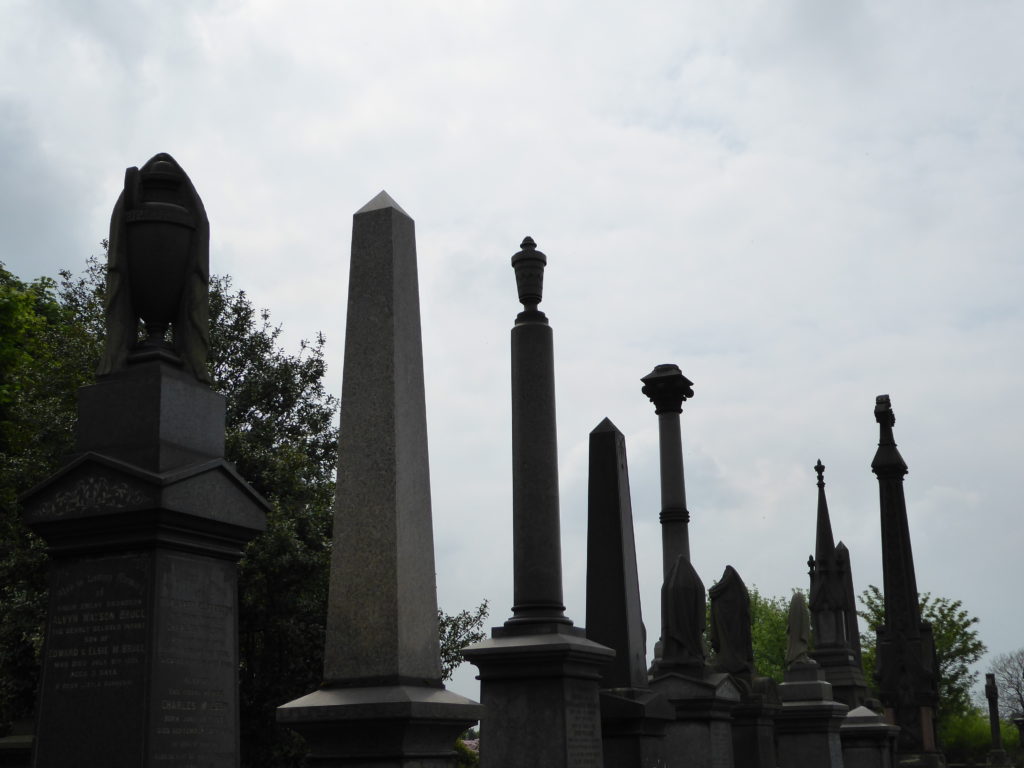
Between 1854 and 1928, 105,742 internments took place at Undercliffe, but by then its use was in decline. The cemetery company eventually went into liquidation in 1977. During the next few years there was growing concern over the condition of the site and the Friends of Undercliffe Cemetery was formed. After considerable pressure, Bradford Council purchased the site in 1984, declared it a conservation area and sponsored a two year restoration programme. In 1985 a new cemetery company was formed and has since become the Undercliffe Cemetery Charity. Unlike St James’ though, plots remain available — you can still be buried in Undercliffe.
This high up the air is bracing and even when the atmosphere is thick, you can see some for distance. Lines of dark yellow Yorkshire stone terraces step-climb the hills in all directions in neat, slanting rows. In the valleys, the flat grey retail sheds that replaced the mills are themselves now often empty. The sweeping main promenade through the graveyard is as dramatic as its designers intended, flanked on both sides by towering graves. Whereas St James’ is sparse, Undercliffe remains dense. A forest of obelisks, urns and crosses, trying to outdo each other in reaching upwards to the sky. Unlike churchyards where rich and poor were buried side by side, the ability to pay governed the site of a grave in Undercliffe. Plots near the promenade were the most expensive. We may be equal in death but not in memoriam.
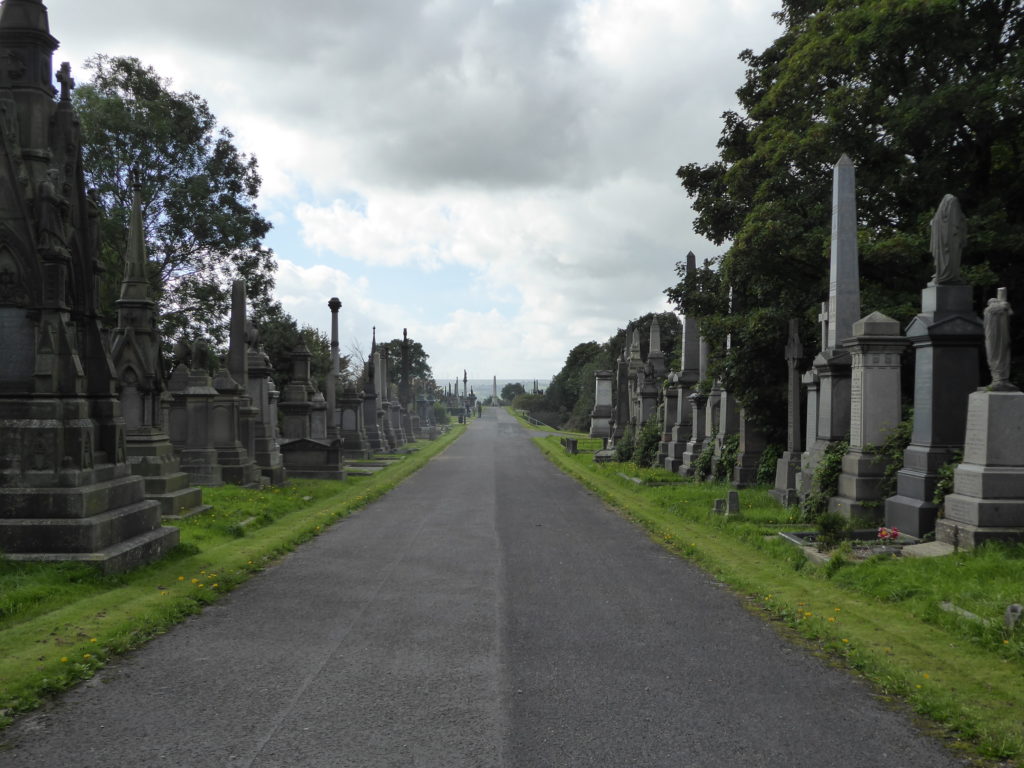
As to be expected in a city built on wool, textile makers and merchants have some of the largest graves, including the muscular Egyptian-style Illingworth monument, still guarded by two mini sphinxes and a carved Ra — a reminder that so much of this seeming ancientness was an affectation. Age gives it an elegance, but despite the quality, most of it was pretty basic following of fashion: a smattering of Celtic and Roman, Egyptian and Greek. Fashion always changes though, and now we’ve come a long way from even the rich having such elaborate graves. Many question if we want money to be spent after death on a chunk of marble with our name carved in it. At least back then there was more variety. From the dandyish foliage, fruit and swirls of the Behrens monument, to the solemn, almost modernist, column of architect William Mawson’s grave. Mawson was the co-designer of local landmarks like Bradford Town Hall, the Wool Exchange and Saltaire Congregational Chapel. Also buried here is Miles Moulson, whose firm built large portions of the famous village of Saltaire, and Joseph Smith, the agent who bought the land for Titus Salt that Saltaire would be built on. Salt himself was one of the sponsors of this cemetery. A full circle of the dead who built Bradford.
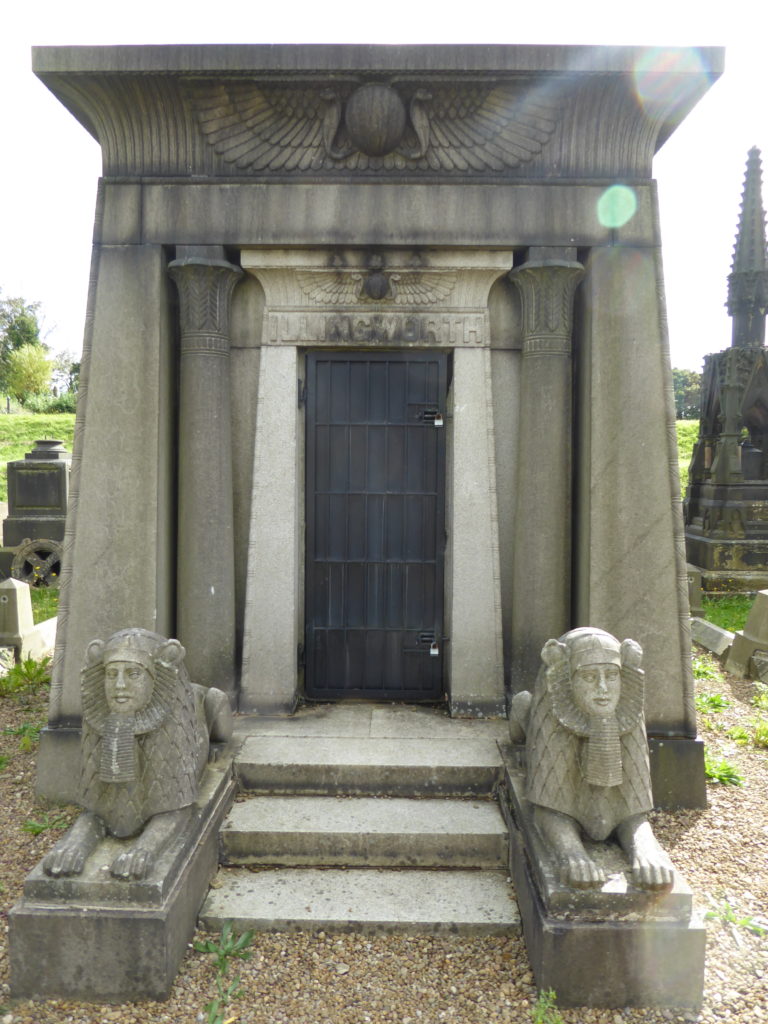
All the symbolic codes of these graves were once familiar to anyone walking past, and now they’re obscure. After only a handful of generations, we need a translation to understand much of it. Along with the more familiar crosses and slabs, there are veiled urns and weeping willows carved in stone. Cylinders, pillars, pediments. Prancing horses and clasping hands. As well as our lost understanding of these symbols, the information in English, despite best efforts, gets lost too. Letters worn. Texts cracked. Pieces sheared away. Names, even whole stones disappearing under thick, bright green grass. Vines wrap themselves around the needles of obelisks. Armless angels and headless saints. All the decay of course makes it more visually interesting — a fractured saint is more photogenic than a polished one. The enduring appeal of the mysterious ruination.
Old cemeteries such as these are amongst the strangest parks you’ll find. Given most urban areas have plenty of green spaces, why do so many people enjoy spending time in places intended to house the dead and provide for the occasional visit from the connected living? There is of course, the romantic, melancholic notions that such places can spark in us. What better way to contemplate your situation in life than being reminded of its shortness? Indeed, all our folly in trying to make permanent things, especially about ourselves. Such things are even more apparent in graveyards now largely shut down, less tended by relatives and where nature is doing its best to take it all back. Such notions of course are a little ironic when you consider the deeply practical and financial reasons both cemeteries were founded as private, for-profit outfits, mainly to benefit those with money to spare. A forbear of today’s public-private spaces. That said, many of our Victorian public parks themselves were founded in part to sell the big houses around them. Anything which looks old we can find all too easy to separate from its often practical, even cynical, origins by virtue of the grace that the passing of time gives.
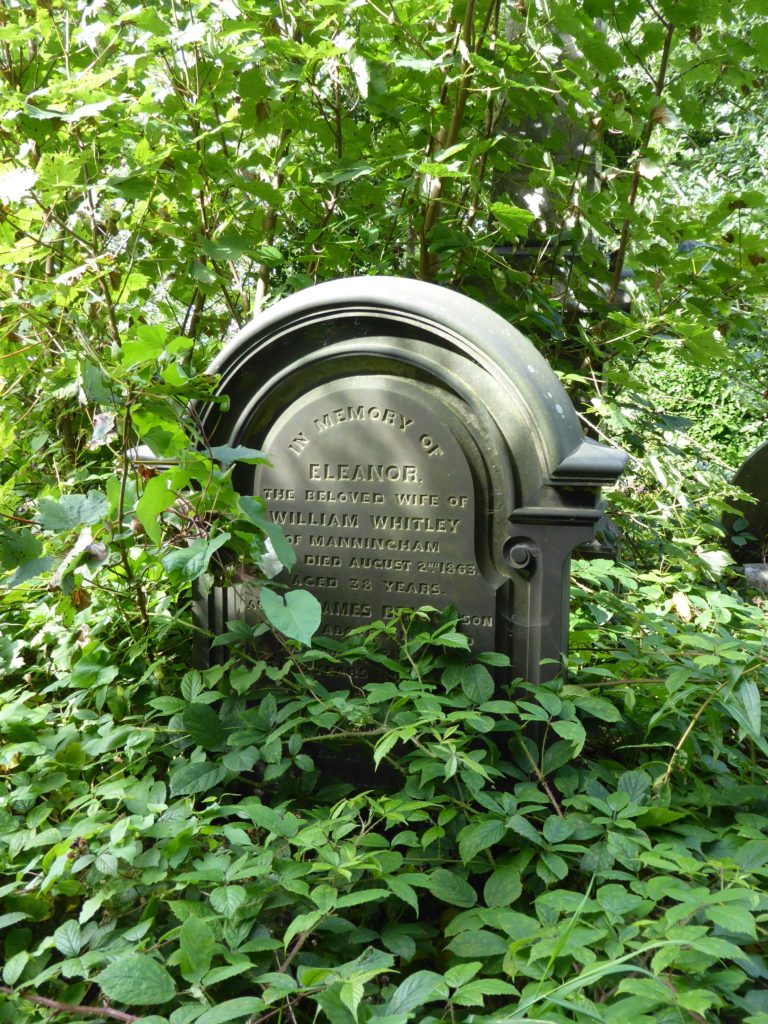
Yet regardless of how they came to be, such places of romantic, if managed, decay, gives them a feel of being somewhere a little out of time and out of the commercialism that now intrudes into every sphere of life. Both these sites are popular perhaps just because they’re quiet spaces, with a sense of isolation from the wider world. Places high and low and away from the centre to escape the troubles and intensities of city life. Somewhere those with busy lives can briefly forget about them and those with time to kill can go for a while. More prosaically, both cemeteries remain popular with young people as places to indulge in their own lives away from guardians. Playgrounds amongst the dead.
The cities these cemeteries are in are no longer the commercial powerhouses they once were. Though along with the (sadly still more often than not) empty mills and dock warehouses that drove the need for such cemeteries, they are an echo of that time. Reminders that, however big the boom, the scale of wealth accumulated, or grand structures built, everything eventually goes the same way. To quote Geoff Dyer: ruins don’t make you think of the past, they direct you towards the future. The effect is almost prophetic. This is what the future will end up like. This is what the future has always ended up looking like.
*
Kenn Taylor is a writer and creative producer with a particular interest in culture, community, class and place. He was born in Birkenhead and has lived and worked in Liverpool, London, Bradford, Hull and Leeds. His work has appeared in a range of outlets, from The Guardian and City Monitor to Elsewhere Journal and Liverpool University Press. Visit his website here.
References:
Friends of St James’ Garden
Undercliffe Cemetery Charity
The Secret Message Buried in Liverpool Cathedral